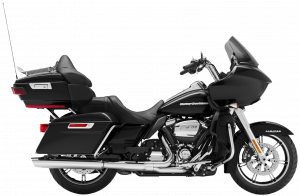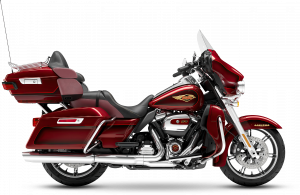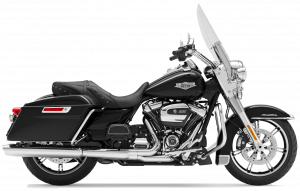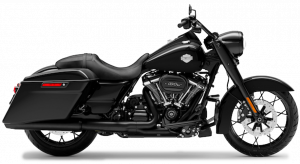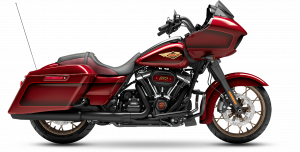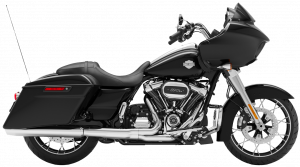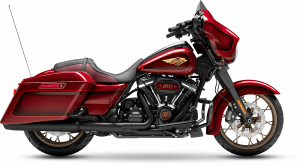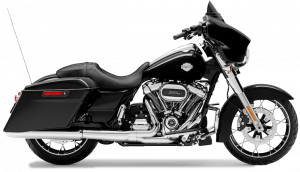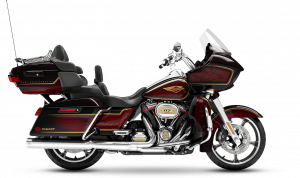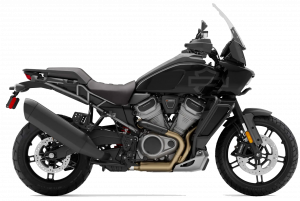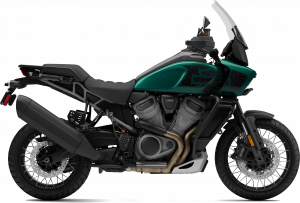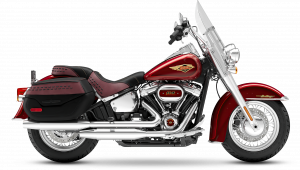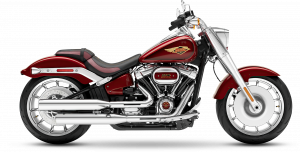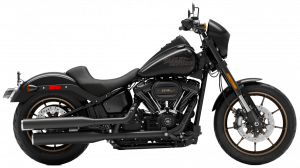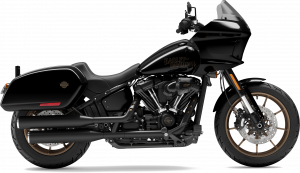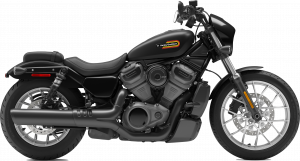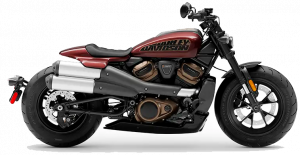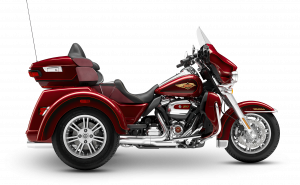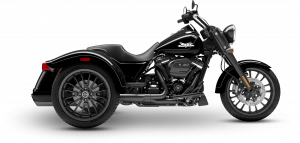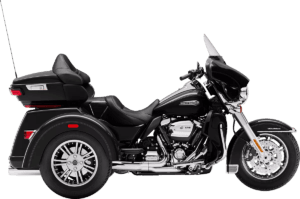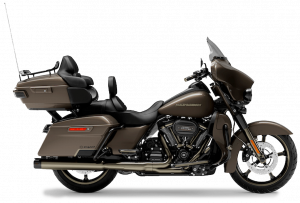
REFLEX DEFENSIVE RIDER SYSTEM
Welcome riders, to the year 2020. While there may not have been many cosmetic changes compared to the previous year models, you should definitely take note of some great technological innovations that have been added to the anatomy of select models.
Behold: the Reflex™ Defensive Rider Systems (RDRS), a new series of technology designed to match motorcycle performance to available traction during acceleration, deceleration and braking. In other words, this intelligent safety tech will help you- the rider- maintain better control of your motorcycle while riding potentially hazardous roads or when encountering urgent situations, such as fast accelerations and braking at high speeds, or in a tight curve. It's even smart enough to make adjustments when traction is low and when your tire pressure needs to be addressed.
You can expect all RDRS to come stock on all 2020 LiveWire™, CVO™, Police and Trike models and optional on all 2020 Touring models in the U.S. (except Electra Glide® Standard Model).
Now that we've peaked your interest, let's take a look at some of the finer details of the new RDRS systems.
ADVANCED BRAKING
ANTILOCK BRAKE SYSTEM (ABS)
Anti-lock Brake System (ABS) is designed to prevent the wheels from locking under braking and helps the rider maintain control when braking in a straight-line, urgent situation.
ABS assists the rider in maintaining control when braking in a straight-line and in urgent situation. ABS operates independently on front and rear brakes to keep the wheels rolling and prevent uncontrolled wheel lock.
*ABS is standard on MY20 LiveWire™, CVO™, Touring, Police, Trike and select Softail® models; and optional on all MY20 Street™, Sportster® and remaining Softail® models.CORNERING ENHANCED ABS (C-ABS)
Cornering Enhanced ABS (C-ABS) is a variant of ABS that is designed to balance braking and cornering loads at the tire contact patch while under combined cornering and braking.
C-ABS is a variant of ABS that tailors brake pressure to longitudinal slip, based on motorcycle lean angle or trike lateral acceleration. The system is intended to preserve lateral grip at the tire contact patch while under combined cornering and braking loads.
*C-ABS is standard on MY20 LiveWire™, CVO™, Police and Trike models and optional on all MY20 Touring models in the U.S. (except FLHT).ELECTRONIC LINKED BRAKING (ELB)
Electronic Linked Braking (ELB) applies braking effort to both wheels when the rider uses either the hand lever (front) or foot pedal (rear) brake control, which can help riders achieve better braking performance.
The Electronically Linked Braking (ELB) system allows for more balanced front and rear braking under a wide variety of brake applications. The system provides more linking when the rider is applying heavier braking and reduces or eliminates linking for light braking and low speeds. When linked, applying the front brake lever alone will cause the system to also dynamically apply an amount of braking to the rear. Applying the rear brake pedal alone will cause the system to also apply an amount of braking to the left front caliper.
*ELB is standard on all MY20 Touring and Trike models.CORNERING ENHANCED ELECTRONIC LINKED BRAKING (C-ELB)
Cornering Enhanced Electronic Linked Braking (C-ELB) takes into account the motorcycle lean angle or Trike lateral acceleration. C-ELB will alter the proportioning of brake pressure between the front and rear brakes when braking while cornering in an attempt to improve the ability of the motorcycle to maintain the rider’s intended path.
C-ABS is a variant of ABS that tailors brake pressure to longitudinal slip based on motorcycle lean angle or trike lateral acceleration. The system is intended to preserve lateral grip at the tire contact patch while under combined cornering and braking loads.
*C-ELB is standard on all MY20 CVO™, Police and Trike models and optional on all MY20 Touring models in the U.S. (except FLHT).DRAG TORQUE SLIP CONTROL
DRAG-TORQUE SLIP CONTROL SYSTEM (DSCS)
Drag-Torque Slip Control (DSCS) is designed to reduce excessive rear-wheel slip under deceleration, which typically occurs when the rider makes an abrupt down-shift gear change or decelerates on wet or slippery road surfaces.
When DSCS detects excessive rear wheel slip under deceleration it will adjust engine torque delivery to better match rear-wheel speed to road speed.
*DSCS is standard on all MY20 CVO™, Police and Trike models and optional on all MY20 Touring models in the U.S. (except FLHT).CORNERING ENHANCED DRAG-TORQUE SLIP CONTROL SYSTEM (C-DSCS)
On models equipped with C-DSCS the action of DSCS may be tailored when cornering, based on detected lean angle.
Cornering Enhanced Drag-Torque Slip Control (C-DSCS) is designed to reduce excessive rear-wheel slip under deceleration, which typically occurs when the rider makes an abrupt down-shift gear change or decelerates on wet or slippery road surfaces. When C-DSCS detects excessive rear wheel slip under deceleration it will adjust engine torque delivery to better match rear-wheel speed to road speed. The action of C-DSCS is also enhanced when cornering based on lean angle.
On LiveWire™ model, this feature may be experienced during regen braking on lower traction surfaces.
*C-DSCS is standard on all MY20 LiveWire™ models.
VEHICLE HOLD CONTROL
VEHICLE HOLD CONTROL (VHC)
The primary function of VHC is to use brake pressure to keep the motorcycle from rolling, making it easier to ride away when starting on a hill, a bridge or a parking ramp.
TIRE PRESSURE MONITORING SYSTEM
TIRE PRESSURE MONITORING SYSTEM (TPMS)
TPMS alerts the rider to low tire air pressure. Maintaining proper tire air pressure is important both for vehicle performance and tire life.
The TPMS displays current front and rear tire pressure on the Boom!™ Box GTS screen (or on the odometer on Road King® models) and displays an indicator to alert the rider when tire pressure is low, and the pressure should be checked.
TPMS is a feature of RDRS and is also available as a stand-alone accessory through P&A for MY20 Touring models (except Japan) equipped with Original Equipment or Accessory wheels that accept a TPMS sensor.
*This feature is standard on MY20 CVO™ and Police models and optional on all MY20 Touring models in the U.S. (except FLHT).*IMPORTANT NOTE
Available traction is determined by the road/tire interface. RDRS features on motorcycles are only able to adjust brake pressure or powertrain torque in an attempt to keep the forces at the tire from exceeding available grip. These technologies do not have the ability to increase grip, or to intervene when the rider has not made a brake or throttle application (e.g. coasting through a corner with the clutch disengaged). RDRS features on motorcycles do not have the ability to directly influence vehicle direction. This is a key difference between motorcycle RDRS and Automotive Stability Control. The rider is ultimately responsible for steering and path corrections.
